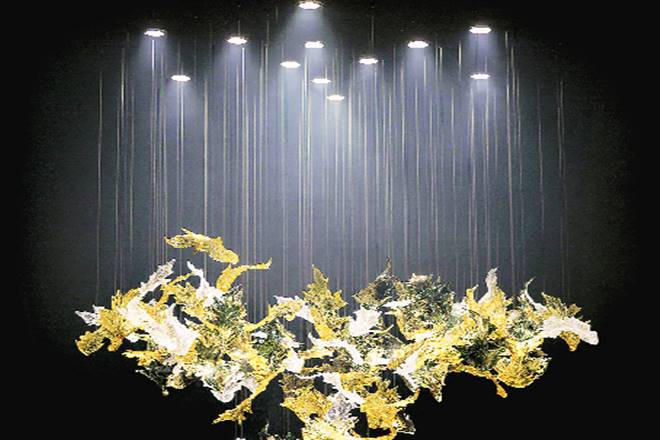Art is a singular concept involving just the artist and his work, but design caters to a larger audience, and has a commercial destination. Similarly, design can be replicated to suit the needs of the masses, while art is a one-time creation. For instance, the most exquisite upholstery can be manufactured to match the demand of buyers, but a Starry Night by Vincent van Gogh is once in a lifetime. There is also a steady rise in the number of designers who are closing the gap between design and art. Israeli industrial designer Ron Arad distinguishes it the best. According to him, any form of design, when created without any restrictions or rules, holds the credibility to make it to the top of the art world. Such a design might be put up for sale, but will always hold immense artistic value. The constant dialogue between commercial design and artistic design, and the need to marry the two in the contemporary world has always made designers push their limits. A pertinent question that arises from this dialogue is: “Does design have the ability to command the value of art in terms of prices?” We try to find the answer from various designers, architects and more who were in the national capital for India Design, an annual design fair.
Neil Harbisson
Is design art?
It depends on the perspective. Not every design can be called a piece of art. One needs to look at it from more than one aspect to categorise a design as a piece of art. It also varies with time, space and context. We are moving towards an age where designs will mostly be done by machines. When they are made 100% by humans, they usually tend towards art. But with the coming of machines, we will be moving away from it. The difference will be wider, as more machines will be working, so they can be classified just as design and not art. AI can create art and will be able to express feelings once they have AI sensory emotions and can evolve on their own. But for now, it can only design, and not express itself artistically. Most people call art an object, but art goes beyond that. Art need not be just physical or tangible. Art can also be a form of sense (the antenna implanted in his skull). You can’t buy or sell the sense, but the creation of your own senses is an art in itself. Such products can be termed as ‘post-art’ since they are unlike the traditional art forms.
Can design command the prices of art?
It is based on how you define it. It can command that value if it is unique, like art is. Art is always unique. If something is reproduced, then it is not the same any more. It is also very subjective and personal. For me, any design that is made with extreme freedom, without any rules and is created once, has that uniqueness. Also, context and philosophy behind design matters. If the design has a historical background, it also commands that value. How the creator defines it and the manner in which it has been placed adds a lot of value to the design for it to become art.
Ross Lovegrove
Is design art?
Not necessarily. It is a contentious question. When designers talk about their work being art, artists consider them to be too pretentious. But if you’re a designer, like me, who believes in the power of form to move people’s emotions, or has the ability to use abstraction, then it might be possible to call design art. If you look at artists such as Anish Kapoor, you see that he has design in his art. The proportions, the balance of the materials… it can be called art. For design to reach levels of art, it needs to be accessible and not over-intellectual. Design is a multiple voice, while art is a singular entity.
Can design command the prices of art?
Not every design can achieve that. That is the domain of a few designer artists who consciously work to bring art into industrial design and bring some of that design into art. A perfect ensemble of types. There is this higher echelon of people who can think about this subject, but where only a few can make it. Their works can command value as art does. When you reach a stage where you are among the best, only then do you realise the economic value of your work. I am working with this company in China that has one of the finest wood carpenters. They sell tables and chairs for a lot of money since they are handmade by craftsmen. There are all sorts of avenues in which a designer can work between technology and craft. It is the context that matters for a design to command that value, that’s why museums are important. If you showcase a design badly, it shows that you’re not attached to it. Why will anyone buy it? It is about iconography of the rarity, of uniqueness, and not numbers that makes art. It is a kind of conflict as I am successful in what I do and my work sells in large numbers. Whatever I work on, I do it for myself with my own values, hoping that I will find people with a similar set of values. You can channelise this energy into your work that transcends language. For the viewer, it depends on how well they can aspire to read the mind of the creator. The aesthetic expression makes it memorable—you look at it once and it stays with you. It is not always about what you need, but what you want.
Ron Arad
Is design art?
Everything that you do has a different destination. If I design a chair for an Italian company, which will be mass-produced and sold in shops, then it is just design. But if I do something in my studio, just for myself without any discussion or negotiation with anyone, it is art. The moment you define something, as a design does, you restrict it from becoming art. There was a time when the term ‘design-art’ became very famous through auction houses. But then it dropped, as too many people jumped onto the bandwagon. I do not accept the terminology of design becoming art. You should be able to see the art in any design before you actually figure out what the design is. The less the prescriptiveness, the better it has the chance of becoming a form of art.
Can design command the prices of art?
People sometimes complain that their pieces are extremely expensive. They should not be doing that. When I go to an exhibition by Giacometti, or see a sculpture by Henry Moore, I am concerned about the price. But we can consume or enjoy things without purchasing them. But in the art world, success today is also judged by how much things fetch. When you’re working on something that is not for general consumption, you have to be optimistic that someone buys it. A successful artist can be one who works without the worry of who will buy it.
Swapan Seth
Is design art?
Absolutely. Where is the dispute in that assumption? And design is a form of art. In our country, we don’t give due credence to design that it deserves. But if there is period furniture being auctioned by great auction houses, it constitutes for art. If you look at the Baroque movement, then they are not just chairs or cabinets, they hold immense artistic value. However, in this country, we have not been able to give it the due respect. For me, any great piece of art is either a great idea or a great execution. The parameters I have to judge art are the same that I have to judge a pencil sharpener—is it exquisitely crafted, is it minimalistic, has it been thought through?
Can design command the prices of art?
Of course, it does. Some lights are far more expensive than pieces of art. The chandeliers, lamps we see in these auction houses are far more expensive than the paintings they have. So yes, some of them are on a par with artworks. We are reaching there, but not very soon. Globally, the scenario is different.








